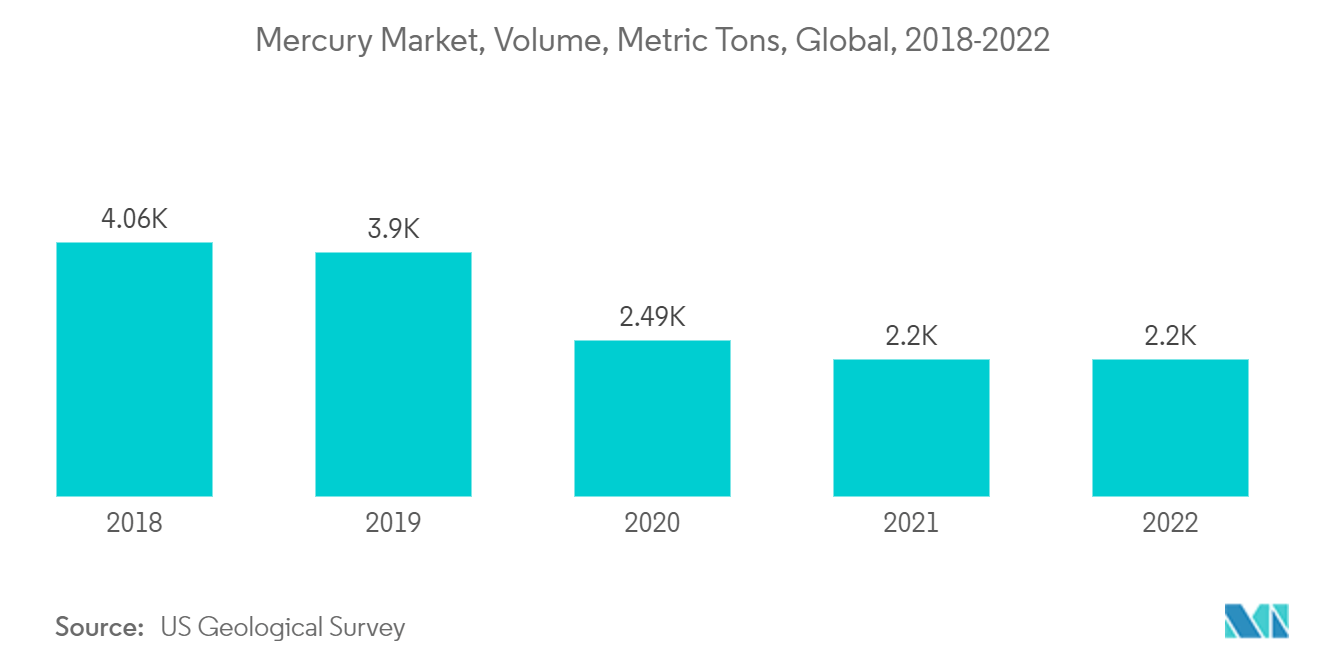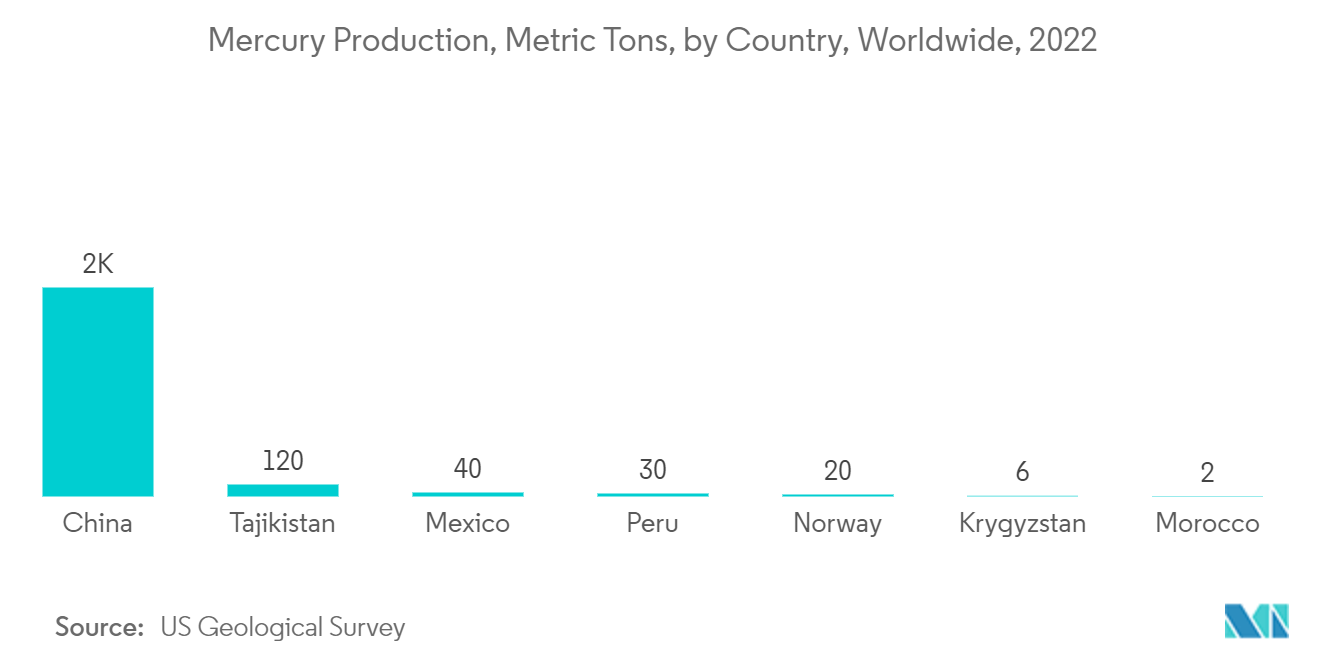Market Trends of Mercury Industry
Measuring and Controlling Devices to be the largest segment
- Mercury is used in various devices such as thermometers, automotive parts, thermostat probes, barometers, vacuum gauges, flame sensors, flowmeters, hydrometers, hygrometers/psychrometers, manometers, pyrometers, medical devices, and more.
- Mercury is used on a large scale in the sphygmomanometer for the measurement of blood pressure. Also, the measurement of blood pressure is important in the diagnosis and monitoring of a wide range of clinical conditions. Traditionally, blood pressure is measured non-invasively using a sphygmomanometer. This is still recognized as the ‘gold standard’ for the measurement of blood pressure.
- In 2022, an estimated 2,200 metric tons of mercury was produced worldwide. It is mainly used in the manufacturing of electrical and electronic goods and industrial chemicals.
- However, environmental concerns regarding mercury have led to the imposition of bans in some European countries, and the supply of healthcare in the United Kingdom is now restricted. Mercury is considered by the World Health Organisation (WHO) as one of the top 10 chemicals or groups of chemicals of major public health concern.

Asia-Pacific to Dominate the Market
- The Asia-Pacific region is the largest market for mercury. In the Asia-Pacific region, China and Kyrgyzstan are the major producers of mercury. In addition to this, China has the world's largest mine production and reserves of mercury. Also, Mercury compounds were used as catalysts in the coal-based manufacture of vinyl chloride monomers in China.
- Therefore, China is the world's largest producer of mercury in 2022, with a mine production volume of 2,000 metric tons. The second leading producer of mercury, Tajikistan, produced approximately 120 metric tons in the same year.
- Globally, 10-20 million people work in the Artisanal and Small-Scale Gold Mining (ASGM) sector, and many of them use mercury on a daily basis.
- Artisanal and Small-Scale Gold Mining (ASGM) is the largest source of anthropogenic mercury emissions (37.7%) globally, followed by stationary combustion of coal (21%).
- According to USGS, China, Kyrgyzstan, Mexico, Peru, Russia, Slovenia, Spain, and Ukraine have most of the world's estimated 600,000 tons of mercury resources.
- Furthermore, Artisanal Small-Scale Gold Mining (ASGM) has extensive operations spanning over 55 countries across Asia, South America, and Africa. ASGM acts as a microeconomic source for these countries; however, ASGM has adverse environmental and health impacts.
- In China, the use of dental amalgams dates back to 1000 AD; today, dental amalgams consist of mercury and a metal alloy of silver, tin, and copper.
- All the aforementioned factors, in turn, are expected to augment the consumption of mercury in the region.

